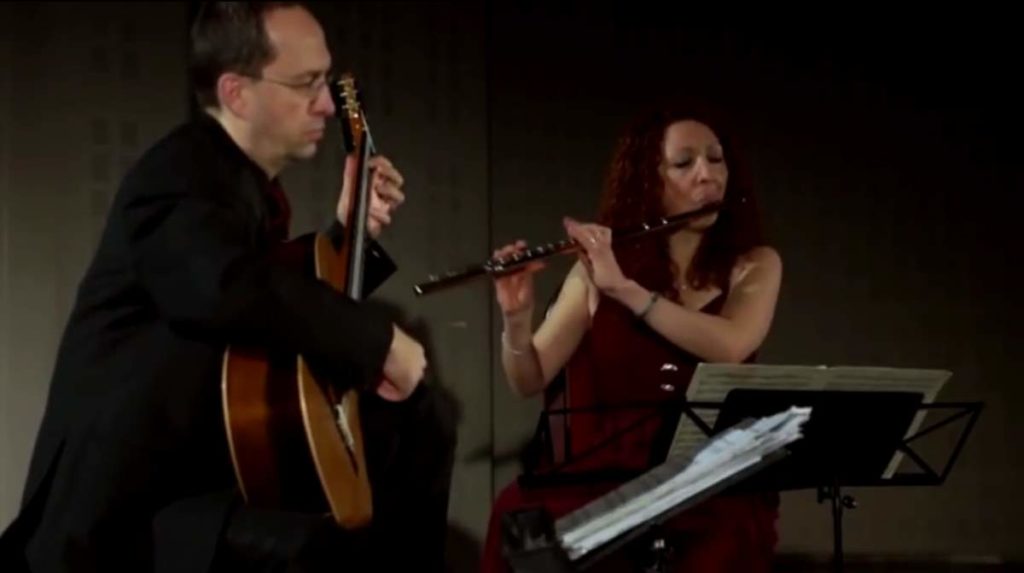Netherlands Bach Society musicians Marten Root (flute) and Menno van Delft (harpsichord) perform Johann Sebastian Bach’s Flute Sonata in A major, BWV 1032. This performance was recorded for the project All of Bach on May 22, 2020, at the art museum Mauritshuis, The Hague.
Johann Sebastian Bach’s Flute Sonata in A major, BWV 1032
Johann Sebastian Bach’s Flute Sonata in A major, BWV 1032, is an intriguing piece both musically and historically. This sonata is believed to be a ‘reconstruction’ of an earlier work, suggesting Bach’s adaptive approach to his compositions. The sonata originally might have been a trio sonata for recorder, violin, and basso continuo, as indicated by notes on the manuscript.
The work’s complex past includes a reconstruction of the first movement due to the loss of several pages from the original manuscript. Bach notated this sonata on the remaining empty staves at the bottom of pages of another music piece he had written earlier, adding to its historical mystique.
The Sonata in A major is typically structured into three movements:
- Vivace: This first movement, partially lost and reconstructed, is characterized by its lively and brisk tempo. It opens with a bright and energetic theme, showcasing the flute’s agility and expressiveness. The movement likely features intricate interplay between the flute and the harpsichord, a hallmark of Bach’s chamber music.
- Largo e dolce: The second movement, “Largo e dolce,” contrasts the first with its slower pace and sweet, lyrical quality. This movement allows for a more expressive and contemplative interpretation, highlighting the flute’s capacity for tender and nuanced melodies. The accompaniment is usually understated, providing a gentle backdrop to the flute’s singing line.
- Allegro: The final movement, “Allegro,” returns to a faster tempo, similar to the first. It is lively and rhythmic, with a more joyful and playful character. This movement typically features a more equal dialogue between the flute and the keyboard, culminating in a vibrant and spirited conclusion to the sonata.
Overall, Bach’s Flute Sonata in A major, BWV 1032, is a testament to his genius in adapting and reimagining his works, and it remains a beloved piece in the flute repertoire. The sonata’s blend of technical brilliance and expressive depth makes it a favorite among both performers and audiences.
Sources
- Flute Sonata in A major, BWV 1032 (Bach) on Wikipedia
- Flute Sonata in A major, BWV 1032 (Bach, Johann Sebastian) on the International Music Score Library Project website
